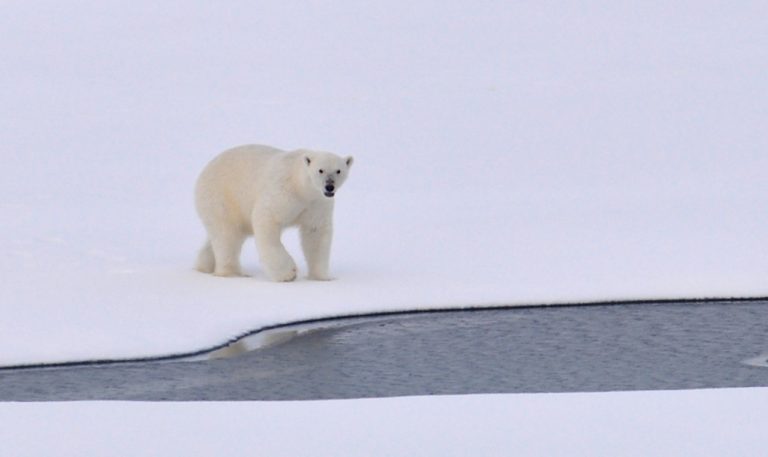Researchers have reported that polar bears may soon enter the list of Endangered Species. The landscape of Arctic has altered greatly due to global warming. Consequently, there is not much food left for polar bears to hunt in the water, due to which the animals are now depending on whatever they can find on land for sustenance. Thus, most of the time they eat things like berries and bird eggs and even mammals like caribou.
Lead study author Karyn Rode said “The smaller size and low population density of grizzly bears in the Arctic provides a clear indication of the nutritional limitations of onshore habitats for supporting large bodied polar bears in meaningful numbers. Grizzly bears and polar bears are likely to increasingly interact and potentially compete for terrestrial resources.” Like the grizzly bear, polar bears are very large mammals and need high energy while hunting food. That is why they prefer to hunt in the water and their traditional diet easily provides them with enough calories, vitamins and minerals.
The Anchorage, Alaska-based U.S. Geological Survey research wildlife biologist stated “The reports of terrestrial feeding by polar bears provide important insights into the ecology of bears on land. In this paper, we tried to put those observations into a broader context. Focused research will help us determine whether terrestrial foods could contribute to polar bear nutrition despite the physiological and nutritional limitations and the low availability of most terrestrial food resources. However, the evidence thus far suggests that increased consumption of terrestrial foods by polar bears is unlikely to offset declines in body condition and survival resulting from sea ice loss.”




